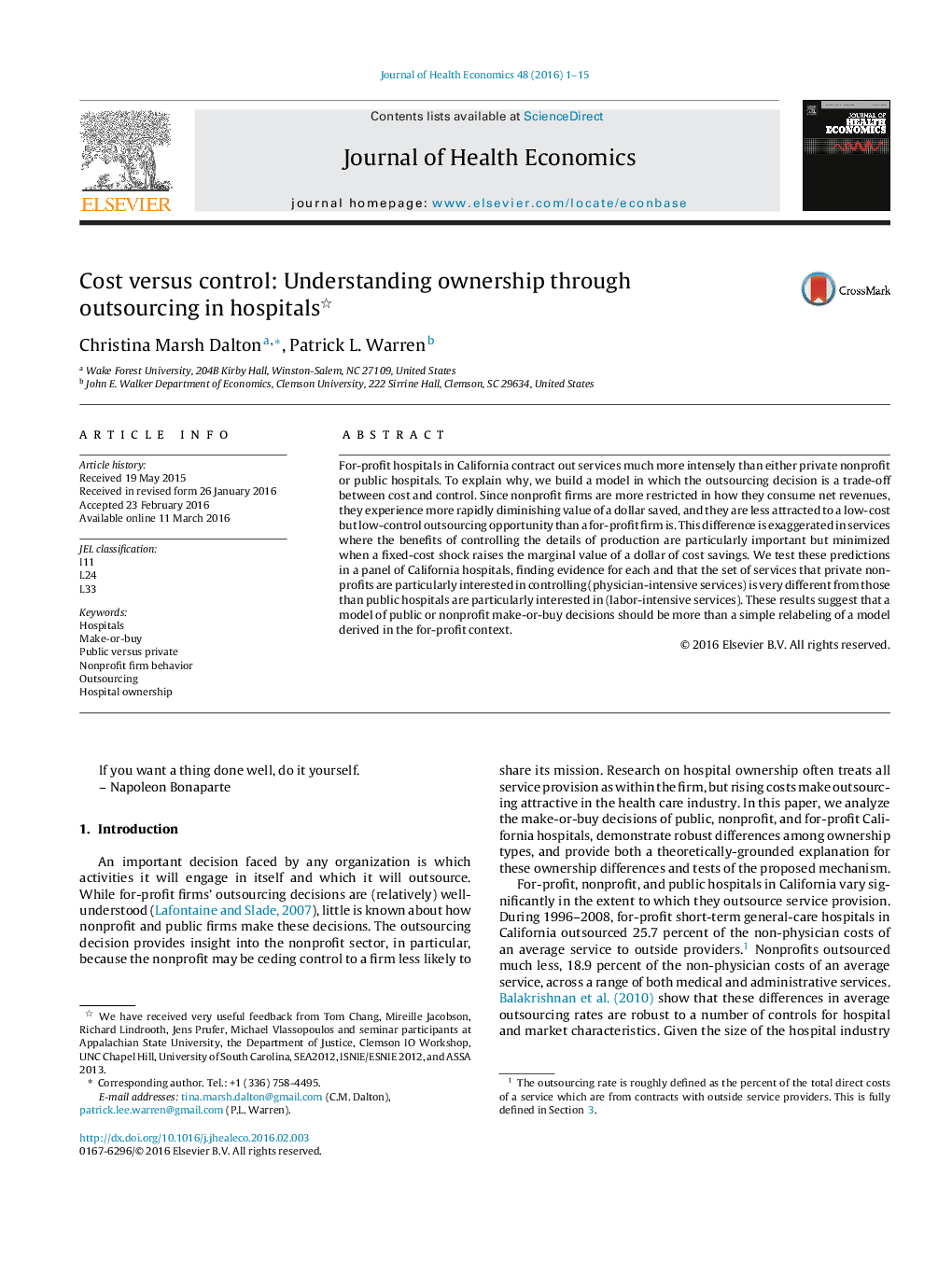| Article ID | Journal | Published Year | Pages | File Type |
|---|---|---|---|---|
| 7363153 | Journal of Health Economics | 2016 | 15 Pages |
Abstract
For-profit hospitals in California contract out services much more intensely than either private nonprofit or public hospitals. To explain why, we build a model in which the outsourcing decision is a trade-off between cost and control. Since nonprofit firms are more restricted in how they consume net revenues, they experience more rapidly diminishing value of a dollar saved, and they are less attracted to a low-cost but low-control outsourcing opportunity than a for-profit firm is. This difference is exaggerated in services where the benefits of controlling the details of production are particularly important but minimized when a fixed-cost shock raises the marginal value of a dollar of cost savings. We test these predictions in a panel of California hospitals, finding evidence for each and that the set of services that private non-profits are particularly interested in controlling (physician-intensive services) is very different from those than public hospitals are particularly interested in (labor-intensive services). These results suggest that a model of public or nonprofit make-or-buy decisions should be more than a simple relabeling of a model derived in the for-profit context.
Related Topics
Health Sciences
Medicine and Dentistry
Public Health and Health Policy
Authors
Christina Marsh Dalton, Patrick L. Warren,
